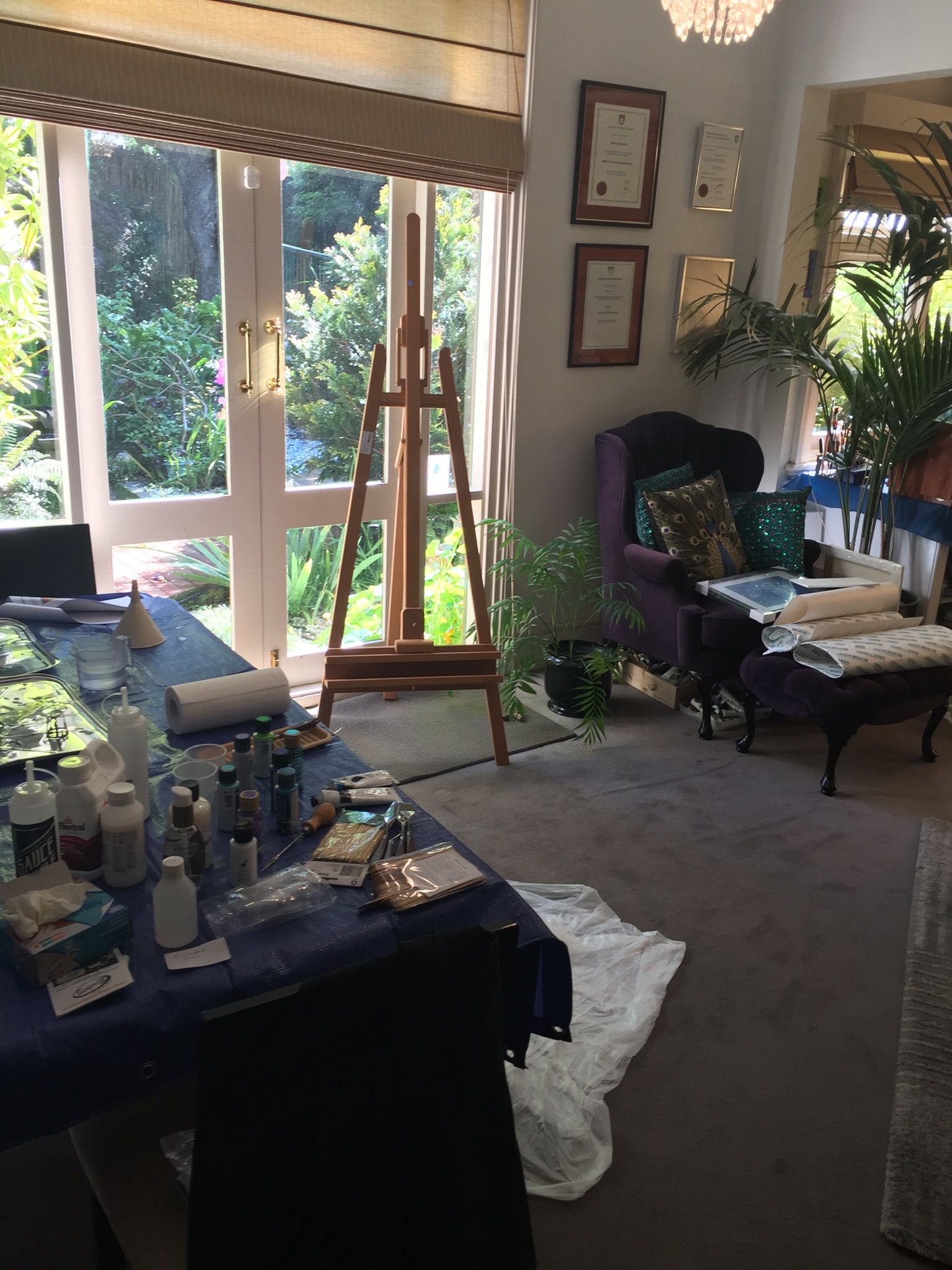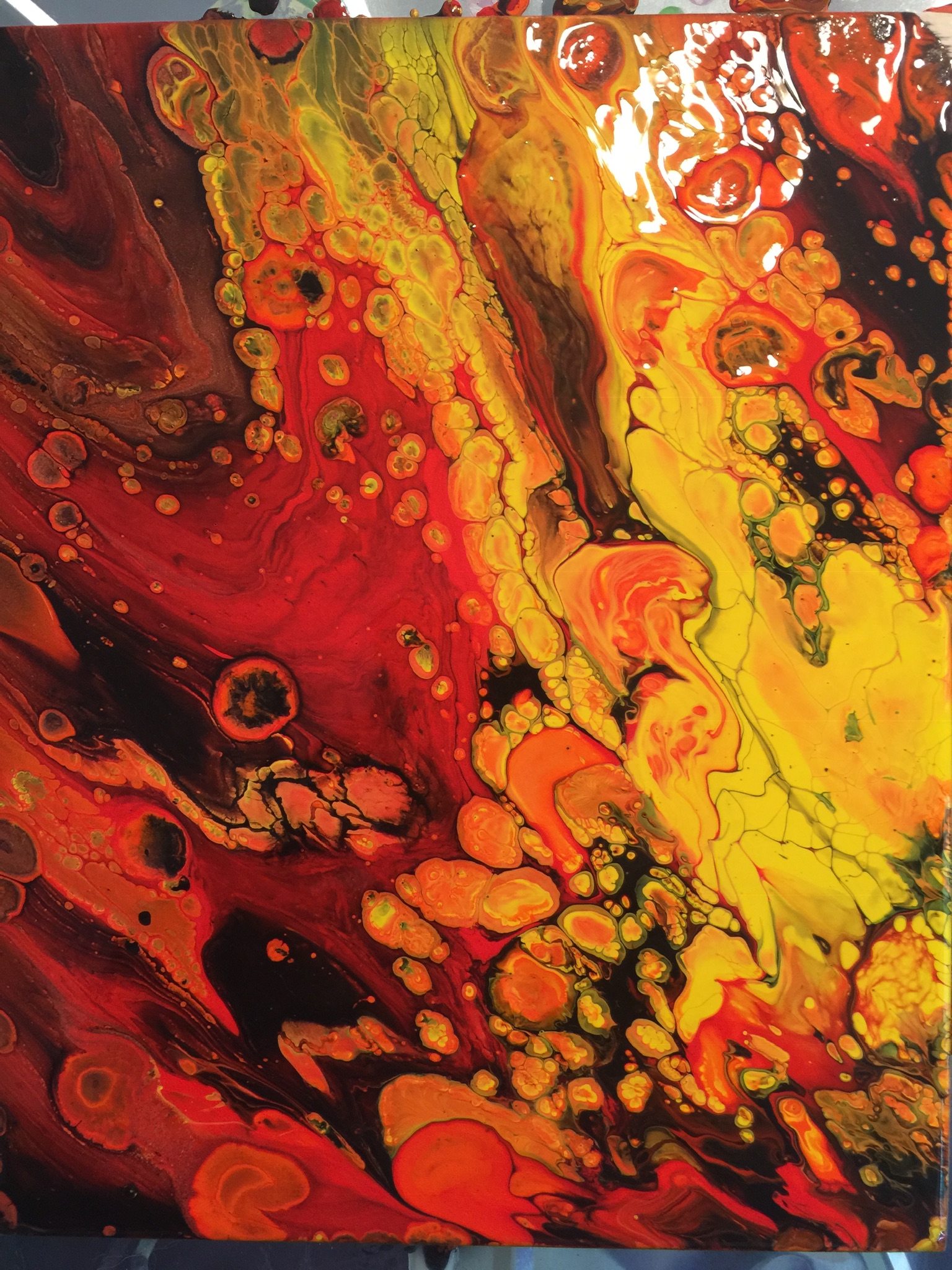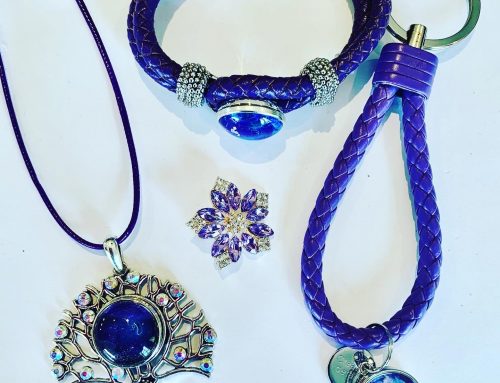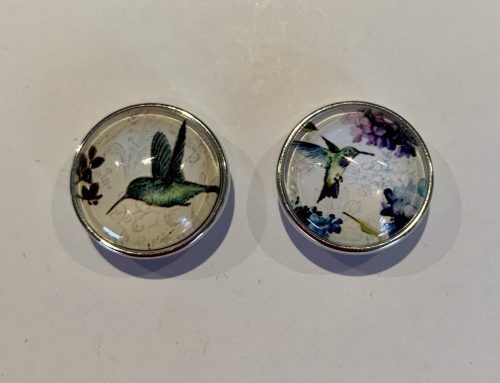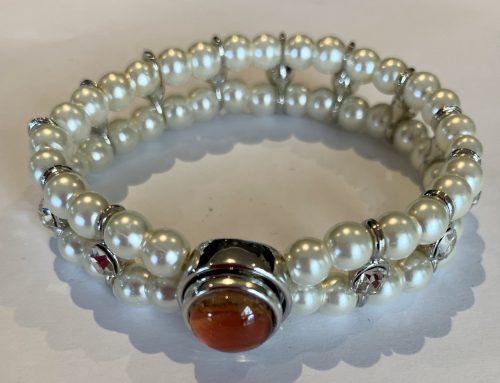After a recent discussion with my hairdresser during the process of a haircut, I discovered the brand new world of acrylic pouring! After detailed research on Facebook, You Tube and Google, I had amassed the necessary information and then hunted down/sourced the materials, including the hard to get silicone oil and the very interesting OGX Coconut Hair Serum (with dimethicone). Have really enjoyed creating unusual pieces in an array of bright colours, including metallic and fluoros. My studio shows the set up for the pouring. Gloves and drop sheets as well as drip trays are a must! The technique can also involve use of a blow torch so care is certainly required.
My piece “Summer Sizzle” gives a vivid demonstration of a “dirty pour” (where all mixed colours are placed in the one cup and then poured directly onto the canvas) including the much sought after “cells”. This was created on a sanded birch timber frame/canvas 20 by 25 cm that had been primed with gesso. The paint flowed over all the sides to give a great outcome. The burnished copper also really added to the effects achieved.
I was also very pleased to do a demonstration of acrylic pouring to Joan Humble’s Colour Circle oil painting course at Mt Nelson last Monday. While this technique is apparently all the rage with younger people it seems to be largely unknown to the more “mature” artists.
Have now completed a series of acrylic pouring mixed media pieces for the Hobart Artist Market which services the cruise ships coming into town, complete with “steam punk” jewellery such as angels, angel wings, feathers, skulls, spider and their webs, and another more mainstream series for the annual Tasmanian Association of Recreational Artists (TARA) members’ exhibition to be held at the Battery Point Community Hall in the second half of December.
If you are thinking of venturing into this medium, there are two excellent Acrylic Pouring Facebook communities. The Atelier Liquitex products are the premium products for this type of artwork. However, I have been experimenting with other agents including Floetrol paint conditioner which is available from Bunnings. I am very mindful of the need for archival quality so will be using the premium products for key pieces. In the US, many people use PVA or Elmer’s glue. This is one ingredient I will not be using due to some reports of crazing and cracking.
Patience is also needed with this art form – it can take 3 days or so for a piece to dry properly.
Will keep you posted on developments.
